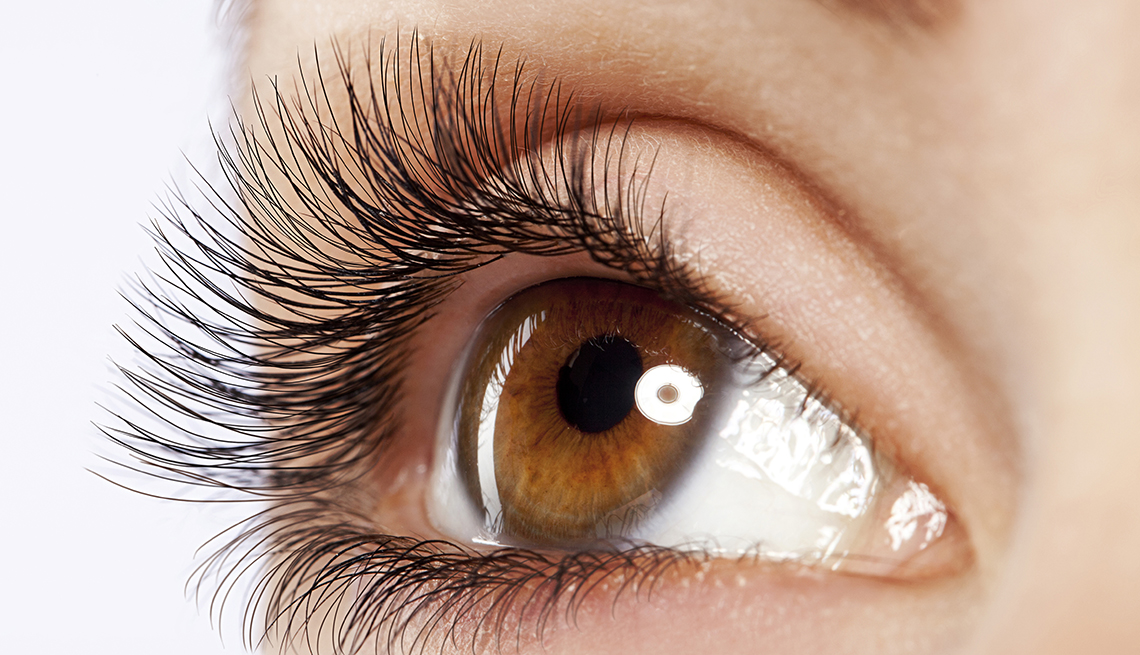
How to safely get the long eyelashes you want
Aarp is ON AIR - VIEW NOW
Please note: this is Beta feature.
Play all audios:
REQUEST A PATCH TEST. “If having extensions applied for the first time, ask your stylist to do a patch test on your wrist, to be sure you're not allergic to the glue,” Haberman
suggests. But remember, even if you don't have a reaction in the salon, it is possible to have one for up to three days afterward. THREE MORE WAYS TO LASH OUT LATISSE: A prescription
eyelash-growth treatment approved by the Food and Drug Administration, Latisse is swiped along the upper lash line, using a nail-brush-style applicator. One drop, before bed, is all you need
for both eyes. (Since your eye should be closed during application, the solution will spread to the lower lash line.) It takes about three months to see full results. The only way to
sustain the look is to keep using the stuff — once you stop, lashes return to their original appearance. _Note of caution: _If applied properly, Latisse is generally safe, though a small
percentage of users may experience irritation or dry eye. Also, those who use drops to treat glaucoma should get the green light from their eye doctor before trying Latisse. And “the serum
may cause darkening of the eyelids, along the lash line, where the product is applied, which usually goes away once you stop using the product,” says Vivian Shibayama, an optometrist at the
UCLA Stein Eye Institute. The most-dreaded complication: an increased and permanent darkening of the iris — though this kind of discoloration is rare. If you do develop problems, stop using
the product and call your doctor. MAGNETIC EYELASHES: These reusable faux lashes are an appealing solution for those who want a longer, fuller fringe without having to grapple with messy
glue. Lashes secure to lids with tiny magnets. There are two types. The first consists of two magnetic lash strips. One is placed on top of your upper lashes; the other, beneath your upper
lashes, then both strips click together. (In short, your natural lashes are sandwiched between two magnetic strips.) With the second type, a magnetic eyeliner is swiped along the upper lash
line. After the product has dried, the base of the magnetic lash strip is aligned with the liner, then pressed onto it. _Note of caution_: Magnetic lashes — particularly the ones that
sandwich your natural fringe — can be heavy on the lashes. “Over time, the weight can actually cause eyelids to droop, a condition known as ptosis,” says Michelle Andreoli, M.D., an
opthalmologist and clinical spokesperson for the American Academy of Ophthalmology. That extra weight can also cause chronic lash loss from repeated tugging. And be aware that they can be
difficult to apply, Andreoli adds: “You need a lot of patience and a steady hand.” LASH LIFT: Think of this as a perm for stubborn, stick-straight lashes that won't cooperate with
eyelash curlers. Lashes are lifted upward, from base to tip. “A lash lift can also make lashes look a little longer, since you're stretching the hair follicle,” Richardson notes. What
it can't do: thicken lashes or give them a dramatic look. During the procedure, lashes are molded around a small curling rod. Chemicals are applied to break down the protein bonds in
lashes, so they become malleable and ready to take a new shape, followed by a setting lotion, to “re-harden” lashes and lock in the curl. Lashes stay curled until they shed; then the process
needs to be repeated to curl the new growth. _Note of caution_: When performed properly, the procedure is safe, but in less-skilled hands, accidents can happen. Lashes can become
over-curled, usually when the wrong size curling rod has been used. And if lashes are overprocessed — which can happen if the perming chemicals remain on lashes for too long — they can
become brittle or even break. Dryness is also common after a lift. Using a conditioning serum (Fartash suggests African Angel Black Castor Oil) every night, before bed, can keep lashes
healthy. Further, there's the risk of a nasty reaction to the solutions used in the process, particularly if you have allergies or skin sensitivities, such as rosacea. If you're
prone to skin problems, request a patch test on your wrist 48 hours before the procedure.